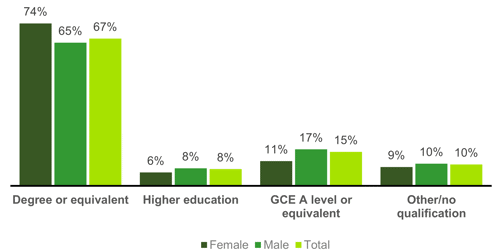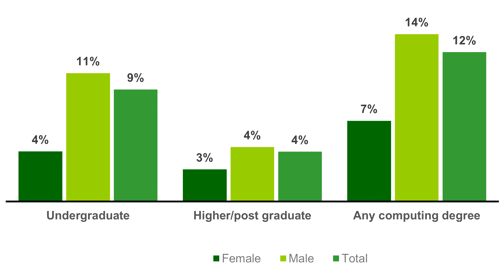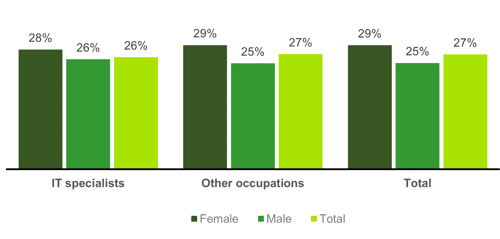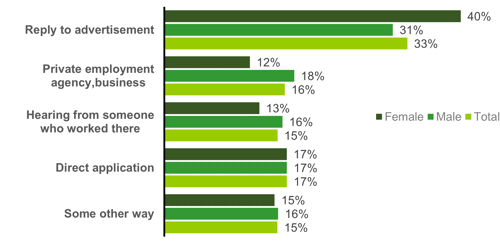Skills & Gender
Qualifications held
Female IT specialists appeared to be more highly qualified than males in 2023 with 80% holding a degree or other higher-level qualification compared with around 73% of males.
This matches the situation within the workforce where 55% of women and 48% of men were found to have qualifications at this level.
Level of educational attainment amongst IT specialists (2023)

Source: Analysis of ONS Quarterly Labour Force Survey by BCS
Though more likely to have a degree level qualification, female IT specialists are much less likely than males to have a degree in an IT-related discipline – just 7% of female IT specialists stating that they held a qualification of this nature in 2023 compared with 14% for males working in IT roles.
IT specialists holding computing degrees (2023)

Source: Analysis of ONS Quarterly Labour Force Survey by BCS
Skills development
In general, female IT specialists were slightly more likely to receive job-related education/ training than their male counterparts during 2023 (28% versus 26% respectively stating that they had received education/training during the previous 13 weeks when surveyed).
This was also true of workers, amongst which, 29% of women stated that they had received education/training during the previous 13 weeks compared with 25% of men.
Job-related education / training in the past 13 weeks (2023)

Source: Analysis of ONS Quarterly Labour Force Survey by BCS
Skills sourcing
The most common identifiable means of IT specialists securing a job (where stated) during the 2019-23 period was by ‘replying to an advertisement’ (33% of those that had been with their employer for less than one year stating they had secured work in this manner), and this was true for both female and male IT specialists.
The proportion of female IT specialists finding work in this way was much greater than for males (40% and 31% respectively stating this to have been the case).
The next most common means of IT specialists securing a job was through a direct application (17%) followed by private employment agencies (16%) and hearing from people already working at the prospective employer (15%). In each of the latter two cases, it is notable that the likelihood of female IT specialists obtaining work this way was much lower than for males.
Means of finding work amongst IT specialists (2019-2023)

Source: Analysis of ONS Quarterly Labour Force Survey by BCS













